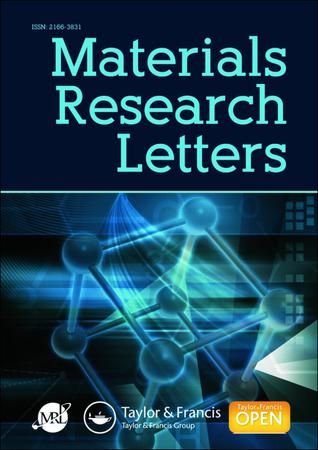Understanding creep behaviors of additively manufactured 316L stainless steel via void characterization
IF 7.9
1区 材料科学
Q1 MATERIALS SCIENCE, MULTIDISCIPLINARY
引用次数: 0
Abstract
Additively manufactured (AM) 316L stainless steel (SS) has been reported to have low creep resistance compared to its conventionally made counterparts. Herein, we quantitatively characterized the voids in a creep-ruptured AM 316L SS specimen and those in a conventional specimen ruptured under the same testing condition. The AM 316L SS contained more small creep voids and fewer large ones. 3D reconstructions showed the spatial distribution of the small voids in AM 316L SS followed the melt pool tracks, which was attributed to the grain structure unique to the laser process. The observations explained the creep behaviors of the two specimens. GRAPHICAL ABSTRACT IMPACT STATEMENT This paper reports that the grain structure resulted from the laser printing process has critical effects on the creep void formation in AM 316L SS.通过孔隙表征了解添加制造316L不锈钢的蠕变行为
据报道,与传统制造的不锈钢相比,添加制造的(AM)316L不锈钢(SS)具有较低的抗蠕变性能。在此,我们对蠕变破裂的AM 316L SS试样和在相同测试条件下破裂的常规试样中的孔隙进行了定量表征。AM 316L SS包含更多的小蠕变孔隙,而较少的大蠕变孔隙。3D重建显示,AM 316L SS中的小空隙沿着熔池轨迹的空间分布,这归因于激光工艺特有的晶粒结构。观察结果解释了两个试样的蠕变行为。图形摘要影响声明本文报道了激光印刷工艺产生的晶粒结构对AM 316L SS中蠕变孔隙的形成具有关键影响。
本文章由计算机程序翻译,如有差异,请以英文原文为准。
求助全文
约1分钟内获得全文
求助全文
来源期刊

Materials Research Letters
Materials Science-General Materials Science
CiteScore
12.10
自引率
3.60%
发文量
98
审稿时长
3.3 months
期刊介绍:
Materials Research Letters is a high impact, open access journal that focuses on the engineering and technology of materials, materials physics and chemistry, and novel and emergent materials. It supports the materials research community by publishing original and compelling research work. The journal provides fast communications on cutting-edge materials research findings, with a primary focus on advanced metallic materials and physical metallurgy. It also considers other materials such as intermetallics, ceramics, and nanocomposites. Materials Research Letters publishes papers with significant breakthroughs in materials science, including research on unprecedented mechanical and functional properties, mechanisms for processing and formation of novel microstructures (including nanostructures, heterostructures, and hierarchical structures), and the mechanisms, physics, and chemistry responsible for the observed mechanical and functional behaviors of advanced materials. The journal accepts original research articles, original letters, perspective pieces presenting provocative and visionary opinions and views, and brief overviews of critical issues.
 求助内容:
求助内容: 应助结果提醒方式:
应助结果提醒方式:


